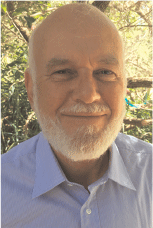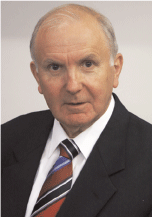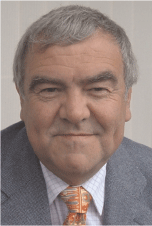The petroleum prospectivity of the Oobagooma Sub-basin and adjacent Leveque Platform, North West Shelf, Australia
Paul Harrison A , Chris Swarbrick B , Jim Winterhalder C and Mark Ballesteros DA Insight Petroleum Pty Ltd.
B Swarbrick Exploration Services Pty Ltd.
C Exploration geologist.
D Searcher Seismic.
The APPEA Journal 56(2) 563-563 https://doi.org/10.1071/AJ15069
Published: 2016
Abstract
The Oobagooma Sub-basin of the Roebuck Basin includes the offshore extension of the onshore Fitzroy Trough of the Canning Basin. Together with the Leveque Platform, it covers an area of approximately 50,000 km2, yet only 14 exploration wells have been drilled in the area to date, five of which were drilled in the past 30 years. The sub-basin contains sediments ranging in age from Ordovician to Recent.
This study examines the petroleum prospectivity of a region that is one of the least explored on Australia’s North West Shelf. Recent exploration drilling has revived interest in the area, with the 2014 Phoenix South–1 oil discovery in the offshore Bedout Sub-basin and the 2015 Ungani Far West–1 oil discovery in the onshore Fitzroy Trough.
The two most significant source rock sequences relevant to the Oobagooma Sub-basin are the Carboniferous Laurel Formation and the Jurassic section. The former interval is part of a proven petroleum system onshore and is the source of the gas discovered at Yulleroo and oil at Ungani and Ungani Far West. A thick Jurassic trough to the north of the Oobagooma Sub-basin is believed to be the source of the oil and gas in Arquebus–1A and gas in Psepotus–1.
Hydrocarbon charge modelling indicates significant expulsion occurred during both the Cretaceous and Tertiary from both source intervals. Trap timing is generally favourable given that inversion structures formed in several episodes during the Late Jurassic to Late Tertiary.
The Early Triassic, now proven to be oil prone in the Phoenix South area (Molyneux et al, 2015), provides an additional (albeit less likely) source for the Oobagooma Sub-basin. These rocks are thin to absent within the Oobagooma Sub-basin, so long-distance migration would be required from deep troughs to the west.

Paul Harrison is a geoscientist with more than 40 years of experience in oil and gas exploration, appraisal and development. He began his career in the Australian Bureau of Mineral Resources, engaged in regional basin evaluations. He then worked in Australia for several active operating companies (Alliance Oil and Lasmo) achieving senior technical and management positions. He later joined Amoco as a senior Technical Advisor and worked on new ventures in Venezuela and the U.A.E., and later with BP in deepwater Gulf of Mexico and Egypt. Since 2005 he has worked as an independent consultant on projects all around the world, including Egypt, East Africa, South America, Mongolia, Indonesia, New Zealand, Australia and Norway. He led a major non-exclusive study of the offshore Canning Basin area during 2014–15. Paul holds a BSc (Hons) degree from Melbourne University, and a MSc from Sydney University. Member: AAPG, SEG and PESA. |

Chris Swarbrick graduated from the University of London with a BSc (Honours) degree in geology and a MSc in petroleum geology. He has worked as a petroleum geologist for more than 40 years, initially in the Geological Survey of Queensland, then with Esso and Texaco. His various assignments with Texaco were in Australia, the US, Nigeria, Indonesia and United Kingdom. From 1992–2001 he was responsible for Texaco’s upstream exploration and production operations in Australia including Texaco’s interests in the WAPET joint venture. Following the Texaco-Chevron merger in 2001, Chris was Exploration Manager for Tengizchevroil in Kazakhstan. He returned to Australia in 2006 and subsequently retired from Chevron. Since retiring he has worked as a consultant for companies operating mainly in Australia and Southeast Asia. He was a non-executive director of Kairiki Energy Ltd from 2007–09. Member: AAPG, PESA and SEAPEX. |

Jim Winterhalder graduated from Imperial College, London in 1969 with a BSc (Special) in geology with Honours and A.R.S.M. He worked as an exploration geologist on mineral prospects in Australia until 1973, then for Exploration Logging in Australia, Peru, Irian Jaya and the North Sea. He was project manager for the Manyingee uranium prospect in 1979. He joined Woodside in 1980 and following two years as Operations Geologist Jim specialised in geochemical studies and modelling. In 1991 he established and managed the New Ventures Team, leaving in 1994 and founding RISC. In 1996 he commenced work as an independent consultant and also worked as an associate for Platte River Associates until 2011. Jim has conducted basin modelling studies and training courses worldwide for various corporations, ranging from small independents to multinational and national oil companies. He also worked with Isis Petroleum Consultants until 2012. Member: PESA, AAPG and GSL. |

Mark Ballesteros is a geoscientist with more than 30 years of experience in various technical and management roles in the petroleum and geothermal industries. He has worked on projects in Australia, Southeast Asia, New Zealand, Europe and South America, including active involvement in a number of significant discoveries while working for Apache Energy in Perth. Since 2000, Mark has been an independent consultant for a variety of clients. Mark holds a BA in Geology from Williams College (Massachuttsets, US), a Bachelor of Applied Science in Energy Studies from Murdoch University (Perth), and a MSc from the University of Tulsa (Oklahoma, US). Member: AAPG and PESA. |
References
Edwards, P.B. and Streitberg, E., 2013—Have we deciphered the Canning? Discovery of the Ungani Oil Field. In: Keep, M. and Moss, S. (eds) The Sedimentary Basins of Western Australia IV: Proceedings of the Petroleum Exploration Society of Australia Symposium, Perth. Perth: PESA.Ghori, K.A.R., 2013—Petroleum geochemistry and petroleum systems modelling of the Canning Basin, W.A. Geological Survey of Western Australia Report 124. Perth: Geological Survey of Western Australia.
Harrison, P.L., Swarbrick, C.F., Winterhalder, J., Ballesteros, M., Wolter, P.J. and Loschi, D., 2015—A New Look at the Offshore Canning Area: Locality of the Largest Offshore Oil Discovery in Australia in Over 30 Years. AAPG-SEG and PESA (joint) International Conference and Exhibition, Melbourne, Victoria, 13–16 September.
Haston, R.B., and Farrelly, J.J. (1993). Regional significance of the Arquebus–1 well, Browse Basin, North West Shelf, Australia. The APEA Journal 33, 28–38.
Kennard, J.M., Jackson, M.J., Romine, K.K., Shaw, R.D. and Southgate, P.N., 1994—Depositional sequences and associated petroleum systems of the Canning Basin, WA. In: Purcell, P.G. and Purcell, R.R. (eds) The Sedimentary Basins of Western Australia. Proceedings, PESA Symposium, Perth. Perth: PESA.
Kingsley, D. and Streitberg, E., 2013—The exploration history of the Laurel Basin-Centred Gas System Canning Basin, Western Australia. In: Keep, M. and Moss, S. (eds) The Sedimentary Basins of Western Australia IV: Proceedings of the Petroleum Exploration Society of Australia Symposium, Perth, WA. Perth: PESA.
Lisk, M., Ostby, J., Russell, N.J., and O’Brien, G.W. (2000). Oil migration history of the offshore Canning Basin. The APPEA Journal 40, 133–51.
Longley, I.M., Buessenschuett, C., Clydsdale, L., Cubitt, C.J., Davis, R.C., Johnson, M.K., Marshall, N.M., Murray, A.P., Somerville, R., Spry, T.B. and Thompson, N.B., 2002—The North West Shelf of Australia—a Woodside perspective. In: Keep, M. and Moss, S. (eds) The Sedimentary Basins of Western Australia 3: Proceedings of the Petroleum Exploration Society of Australia Symposium, Perth, WA. Perth: PESA.
Molyneux, S., Mcgee, R., Goodall, J., Padman, A., Valenti, C., Hartung-Kagi, B., Winterhalder, J., Zein, B. and Jacobsen, T., 2015—The Lower Triassic Petroleum Prospectivity of the North West Shelf Post the Phoenix South–1 Discovery. SEAPEX Exploration Conference, Singapore, 15–17 April.
Smith, S.A, Tingate, P.R, Griffiths, C.M., and Hull, J.N.F. (1999). The structural development and petroleum potential of the Roebuck Basin. The APPEA Journal 39, 364–85.
Woodside, 1998—Psepotus–1 Well Completion Report. Unpublished, (open file).


